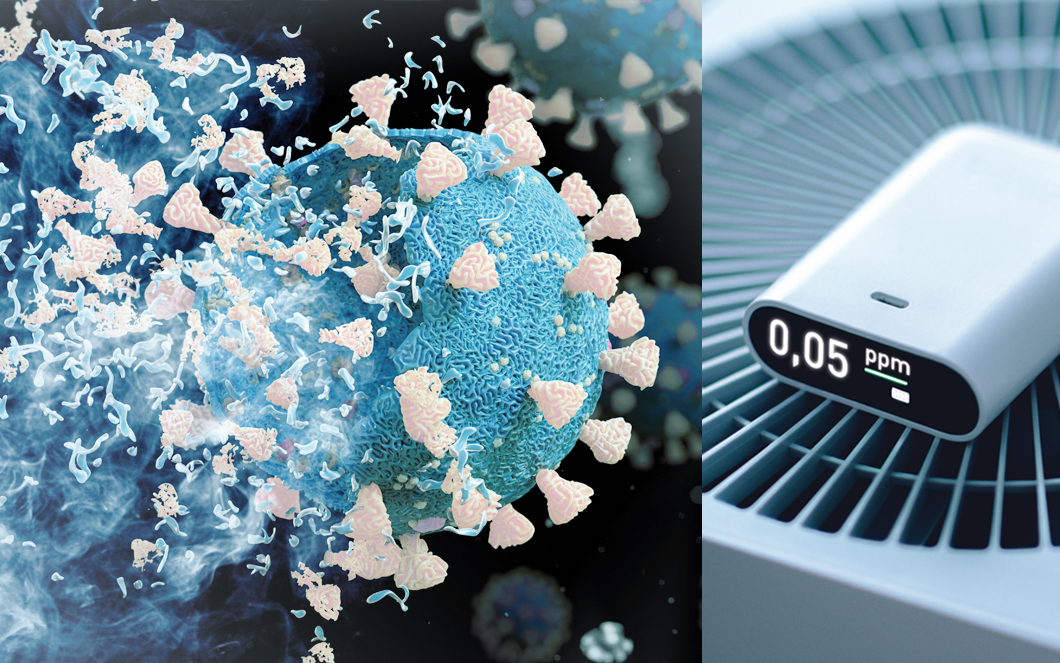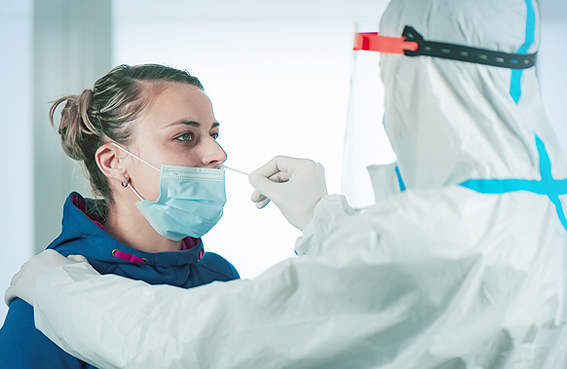Marie Estienny 1, Philippe Daval-Frerot 2, Ludwig-Serge Aho-Glélé 3, Lionel Piroth 4, Pascal Stabile 5, Jean-Yves Gerbet 6, Romain Rouleau 7, Alexis de Rougemont 8, Gaél Belliot 9
Abstract
Disinfection of hospital facilities and ambulances is an important issue for breaking the chain of transmission of viral pathogens.
Hydrogen peroxide has provided promising results in laboratory assays. Here, we evaluate the efficacy of a hydrogen peroxide nebulizer for the inactivation of surrogate MS2 bacteriophage and murine norovirus (MNV) in a patient waiting room and the fully equipped cabin of a medical ambulance. We observed an average 3 log10 titer reduction in both settings, which represents the destruction of over 106 and 109 infectious particles of MNV and MS2 per cm2, respectively.
The potential for viral exposure is high for health workers when disinfecting confined and cluttered spaces, so the use of a hydrogen peroxide mist might offer an affordable and efficient solution to minimize the risk of viral contaminations.
Introduction
In January 2020, Cohen and Normile published an editorial discussing the potential threat posed by a new severe acute respiratory syndrome (SARS)-like coronavirus which had just emerged in China (Cohen & Normile, 2020). Nowadays, virus containment, the chain of transmission within the population, and prevention are important issues as exemplified for COVID-19 (Coronavirus disease) and its etiological agent, SARS-CoV-2. Infectious patient handling requires reinforced hygiene measures to prevent the accidental infection of health workers with viruses, like coronavirus, which has been shown to remain infectious on inert surfaces (Otter et al., 2016; van Doremalen et al., 2020). Therefore, prevention involves new protocols for the sanitization of ambulances and any facility that are frequented by potentially infected patients The emerging SARS-CoV-2 during the year 2020 exemplified the need for reliable, simple, and robust tools for viral disinfection of confined space for the next viral epidemic.
Hydrogen peroxide is well known for its virucidal activity, and its efficacy against a range of enveloped and non-enveloped viruses is well documented in the literature (Goyal et al., 2014; Tuladhar et al., 2012; Yeargin et al., 2016).
Otter et al. underlined that “no-touch disinfection systems” such as hydrogen peroxide nebulizers are gaining attention for surface decontamination in hospitals (Otter et al., 2013). Here, we aimed to determine the virucidal activity of a nebulizing system producing a hydrogen peroxide mist in a patient waiting room and an ambulance cabin, where disinfection procedures are often time consuming and incomplete. Innocuous MS2 bacteriophage and murine norovirus (MNV) were used as surrogates for their robustness in the environment and for safety reasons since the assays were conducted outside of the laboratory.
National Library of Medicine - Institutes of Health (Public Study)
National Library of Medicine - Institutes of Health (Public Study)


